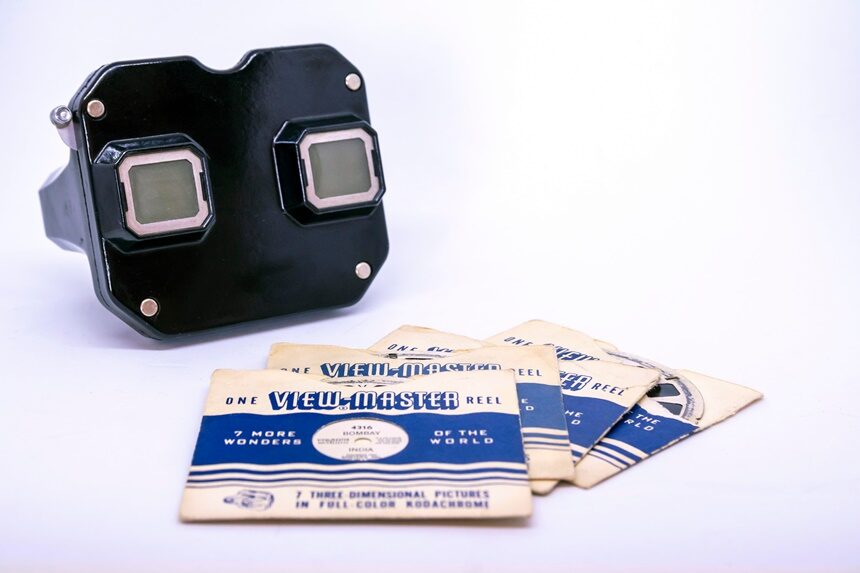Senior managing editor and logophile Andy Hollandbeck reveals the sometimes surprising roots of common English words and phrases. Remember: Etymology tells us where a word comes from, but not what it means today.
The music industry sure has done a number on stereo — that is, on the word-forming element stereo-, because that’s how it began. Long before you could buy a thing simply called a stereo, those six letters weren’t a standalone word but an affix that needed some other word part to be complete.
That affix traces back to the Greek word stereos, meaning “solid.” In science class, the concept of “solid” is contrasted with “liquid,” “gas,” and “plasma,” but it can also be seen as the opposite of imagined or two-dimensional. Thus the stereo- element can indicate both “solid” and “three-dimensional.” And before we got “stereo sound,” this word-forming element was used to describe a neat visual trick.
In the 1830s — the early days of photographic technology — an enterprising inventor named Charles Wheatstone realized that he could use a pair of two-dimensional pictures to simulate real-world, three-dimensional vision if a single scene was photographed from two slightly different points of view and each eye was shown its own picture. The brain would then combine the two images into one, giving the viewer the illusion of physical depth. (The same principle is used in Viewmasters and modern virtual reality headsets.)
He created a simple mechanism to perform this trick, and because it seemed to transform two-dimensional images into solid, three-dimensional space, Wheatstone called it a stereoscope, from stereo- plus the Greek skopein “to look at.”
Moving forward several decades to sound technology: In the days of gramophones, a musical performance would be recorded from a single location, and when the recording was played back, all the sounds were emitted through a single sound amplifier. But someone realized that the same concept that simulated visual depth using two images in a stereoscope could also be applied to sound. By recording and playing back sounds through multiple points, auditory depth could be simulated. We just needed the right tools.
Those tools didn’t come about until the mid-20th century, when sound engineers figured out how to record one performance from two microphones simultaneously onto a single medium and then play that “split” performance back on two speakers. That type of recording was described as stereophonic, using the Greek phone “voice, sound,” because the result gave the illusion of hearing the original performance in a three-dimensional space.
Stereophonic sound allowed listeners to hear music as if it were live — they were able to distinguish sounds coming from the left side from sounds on the right. But this also meant that a new word was needed to differentiate stereophonic sound from the old, single-source recordings. The word monophonic, meaning “one sound,” fit the bill. (This word had an earlier run in musicology as a counter to polyphonic music, but in this case it was recoined specifically as a contrast to stereophonic music, making it a retronym.)
Stereophonic and monophonic recordings existed contemporaneously, and record players were adapted to allow listeners to records stereophonically of monophonically. But the words stereophonic and monophonic were too long to print next to a small knob or switch, so in both complex recording studios and on teenagers’ portable record players, they were abbreviated as stereo and mono.
Fairly quickly, people by and large forgot that stereo was a shortening of a longer word. It wasn’t long before people were talking about the stereo sounds coming from their stereo systems, and then just buying stereos.
Stereo as a noun meaning “stereophonic sound system” didn’t start showing up in dictionaries until the 1960s. But it wasn’t the first time that a longer word had been shortened to just stereo, and the way that stereo- word changed is its own interesting story … which I will write about next week.
Become a Saturday Evening Post member and enjoy unlimited access. Subscribe now




Comments
What a long, strange. fascinating trip the word ‘stereo’ has had, and there’s still a second part. I love the name of this feature, too. As a huge fan of The Cars, I don’t mind having ‘Moving In Stereo’ stuck in my head at all, Andy.